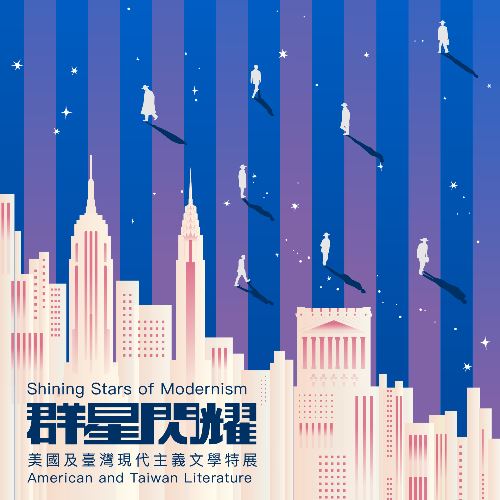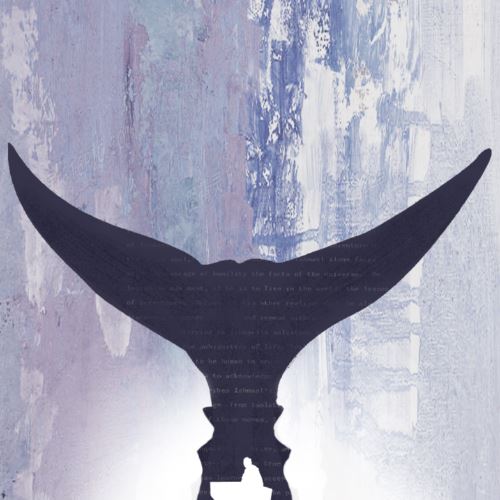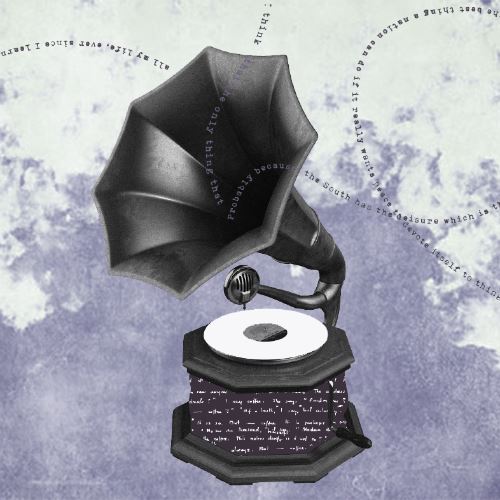✧ F. Scott Fitzgerald ✧ William Faulkner ✧ Ernest Hemingway ✧
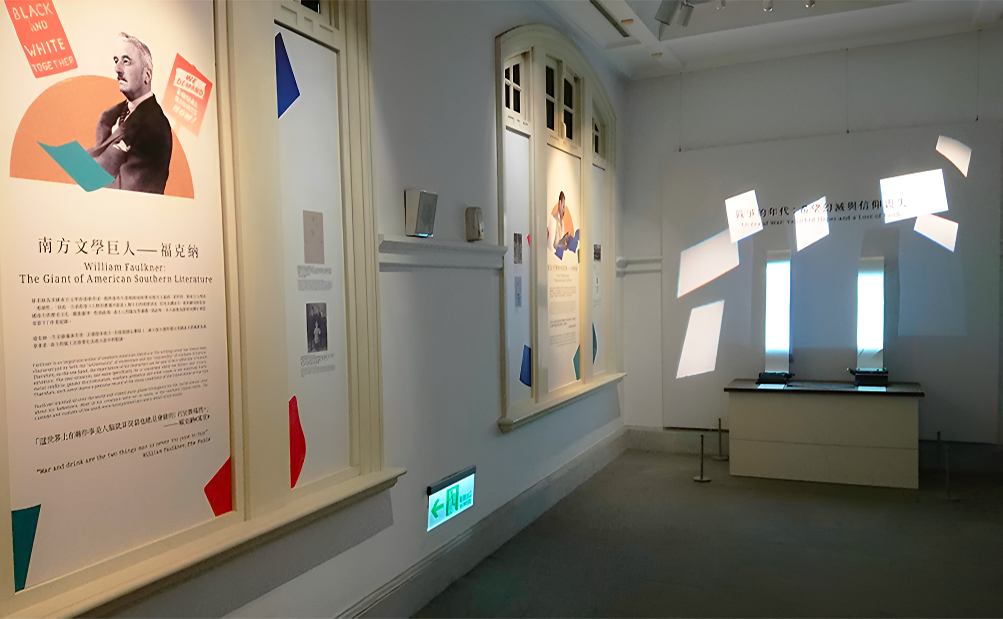
F. Scott Fitzgerald:
Seeing All the Warmth and Coldness of the World
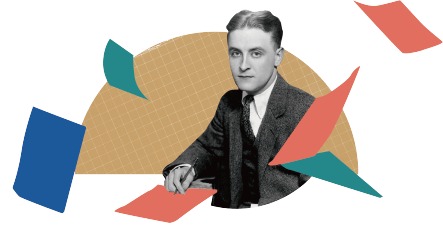
❝ With the attitude he might have held toward an amusing melodrama he hoped it [the great war] would be long and bloody. ❞
—— F. Scott Fitzgerald, This Side of Paradise
F. Scott Fitzgerald created many works before officially becoming a professional writer. His first novel, This Side of Paradise, was actually an extremely hurried work: At the time, Fitzgerald was undergoing officer training in an army boot camp and could be deployed to Europe to fight at any time. Fitzgerald was afraid of dying without leaving a single work behind. He had also fallen in love with a girl from a southern family named Zelda and hoped to marry her. However, he first needed to prove he could support her with his writing. Fitzgerald thus dedicated his spare time to writing the novel.
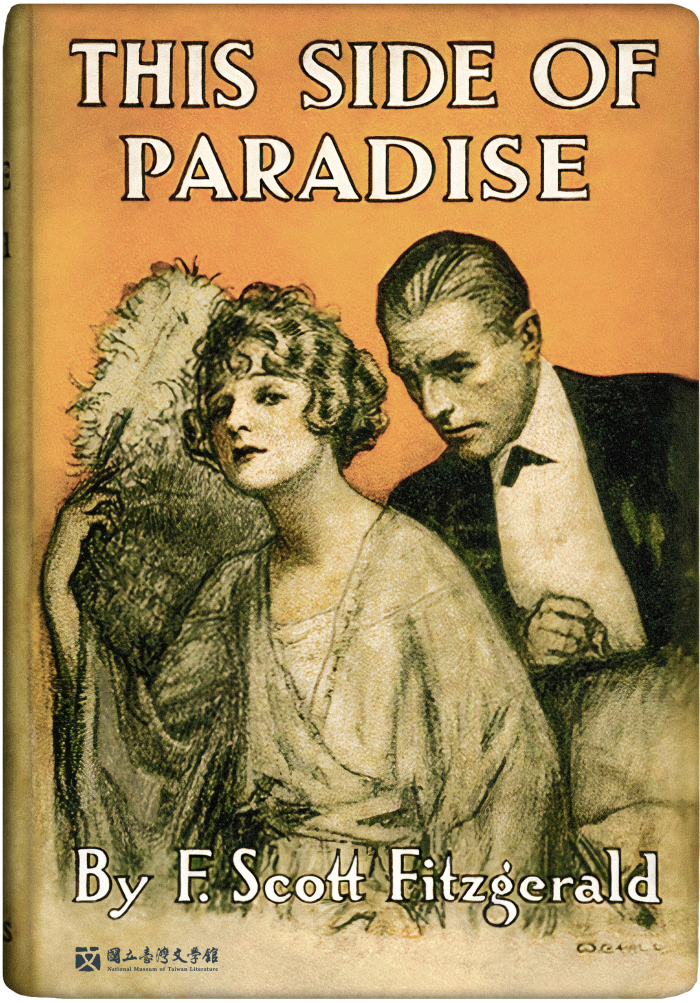


◪ This Side of Paradise by F. Scott Fitzgerald, 1920 / L'envers du paradis : French version cover of This side of paradise, 1964. / Deze kant van het paradijs : Dutch version cover of This side of paradise, 1971
The protagonist of This Side of Paradise is Amory Blaine, a Princeton University graduate who later became a WWI veteran, and the first half of the story tells Amory’s college education and love life, with the second half recounting how he endured poverty and being estranged by his wealthier girlfriend in New York. Readers sympathized with Amory sincerely, for the story depicts social problems of the postbellum US society vividly and was set against the background of the Prohibition era. The book was published in 1920, and 3000 copies of the first print were sold out in just three days, making him a celebrity in the US almost overnight, gaining both fame and fortune and the ticket to upper-class social occasions. A total of 49 thousand copies of the novel were sold by the end of 1921, making his short story royalties rise from 30 US dollars per story to 1000 in 1920. And, in 1929, the payment rose to 4000 per story. (Courtesy of University of South Carolina Libraries)
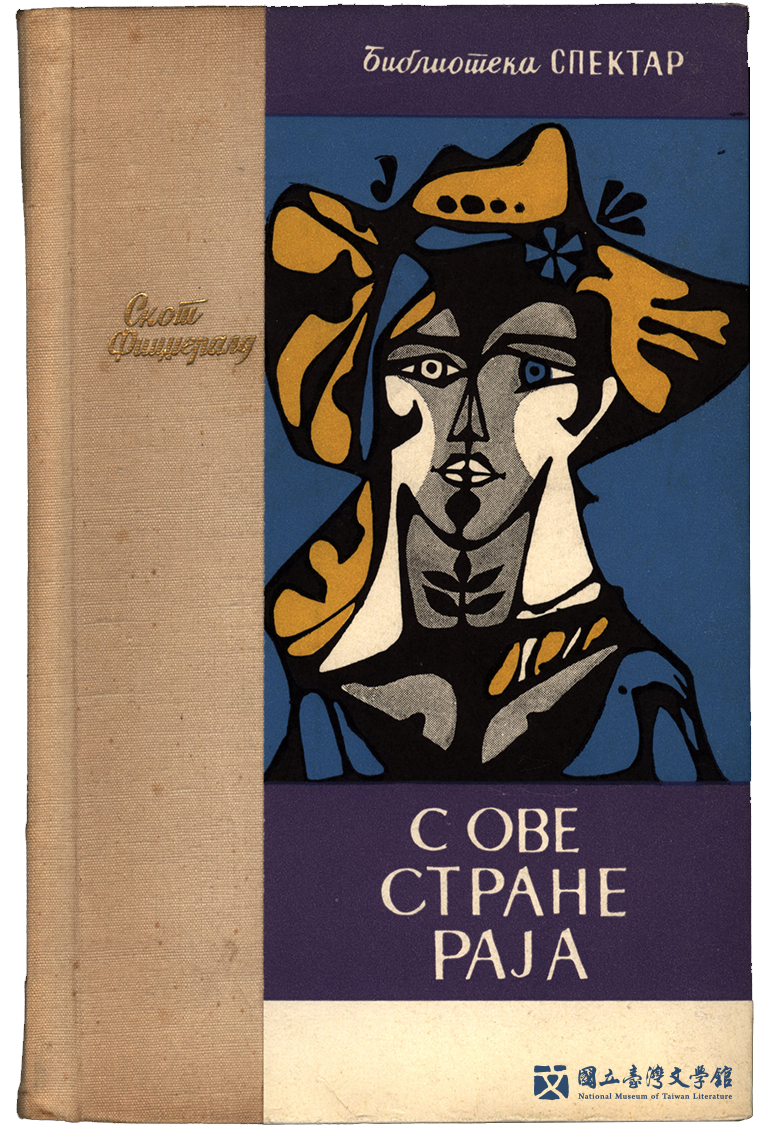
◪ Serbo-Croatian (Cyrillic) version cover of This Side of Paradise,1964
(Courtesy of University of South Carolina Libraries)
William Faulkner:
The Giant of American Southern Literature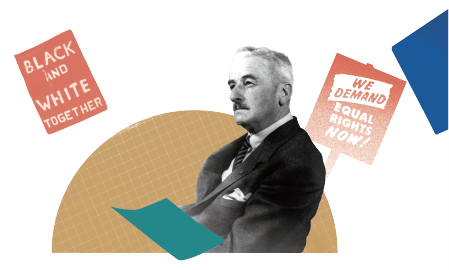
❝ War and drink are the two things man is never too poor to buy. ❞
—— William Faulkner, The Fable
William Faulkner is one of the most representative writers in Southern literature, with works that embody the universalism of modernism and the regionalism inherent to this genre. Though the experiences of his characters can be viewed as portrayals of the human condition, what Faulkner is specifically concerned with are the history and culture of the South along with its social issues, such as racial conflicts, sexism, and prejudice. As a result, each of his works are an invaluable record of American society at different points in history.
Faulkner traveled the world, but his heart was always with the South. This is evident in the majority of his works, which are both set in and revolve around the culture and people of the South.
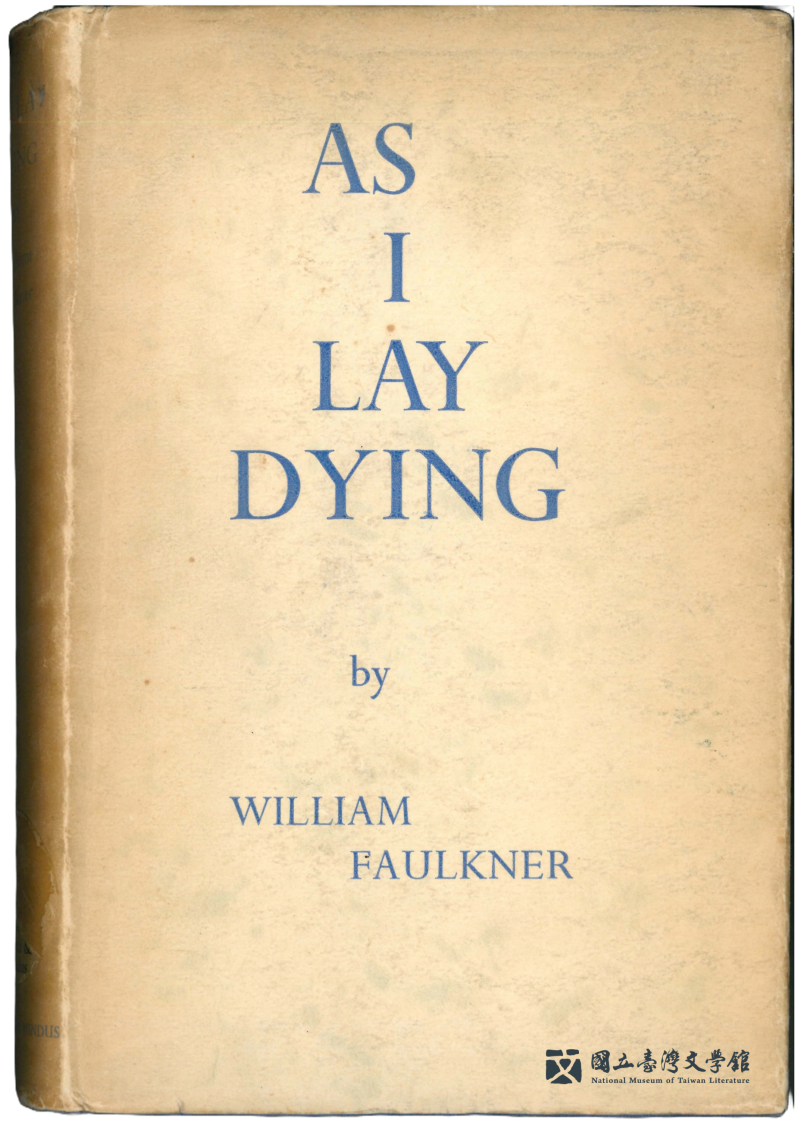
◪ As I Lay Dying by William Faulkner, 1935
The story tells the miserable lives of poor white people in the American South, and the word "dying" refers not only to the physical death of the mother in the story but also to the spiritual death of her children. James Joyce used to say, that if Dublin were to perish from the world one day, it could be reconstructed from what he wrote in the novel Ulysses. It might be true Faulkner and the American South as well.
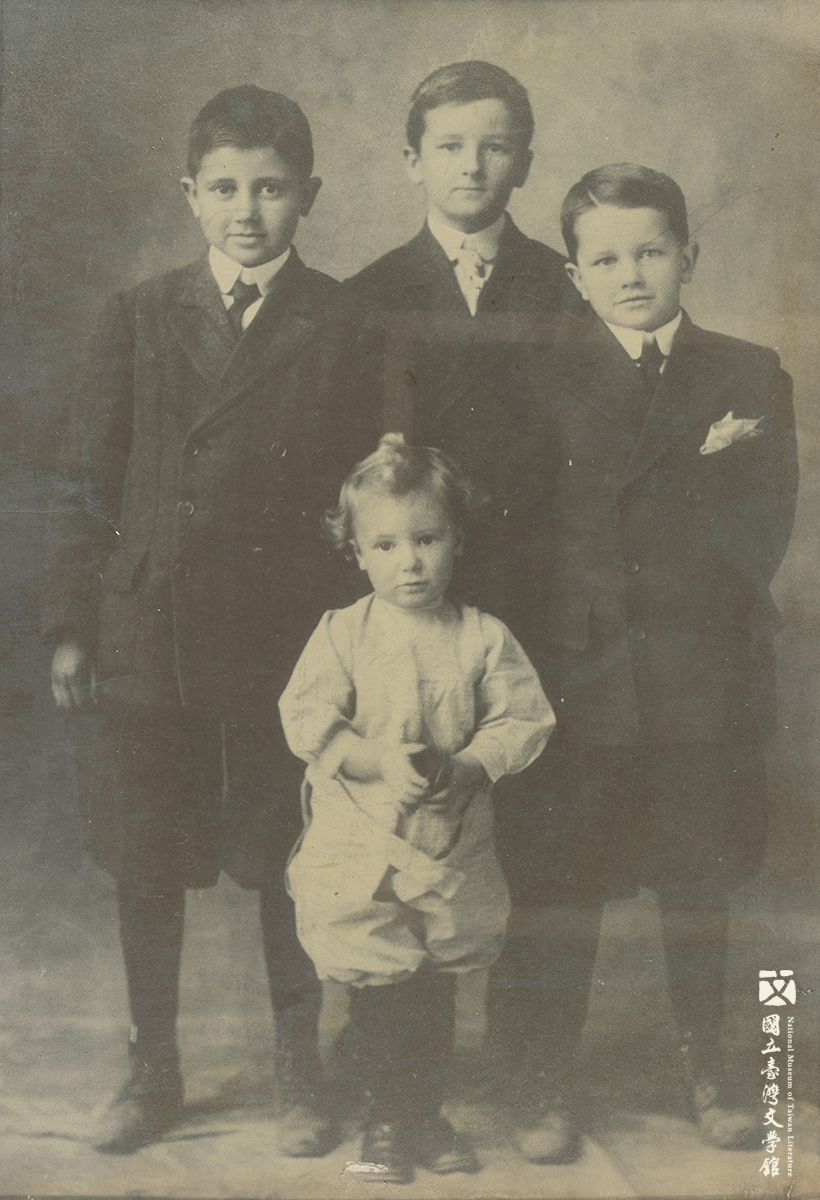
◪ William Faulkner and his brothers, ca. 1910–11
William Faulkner was the oldest of four boys of Oxford, Mississippi. In this photograph, William ("Billy”) is in the back center, with Murry ("Jack,” an FBI agent) to the left, John ("Johncy,” a pilot, farmer, and author) to the right, and little Dean in the front. The photo was taken when "Billy” was about thirteen.
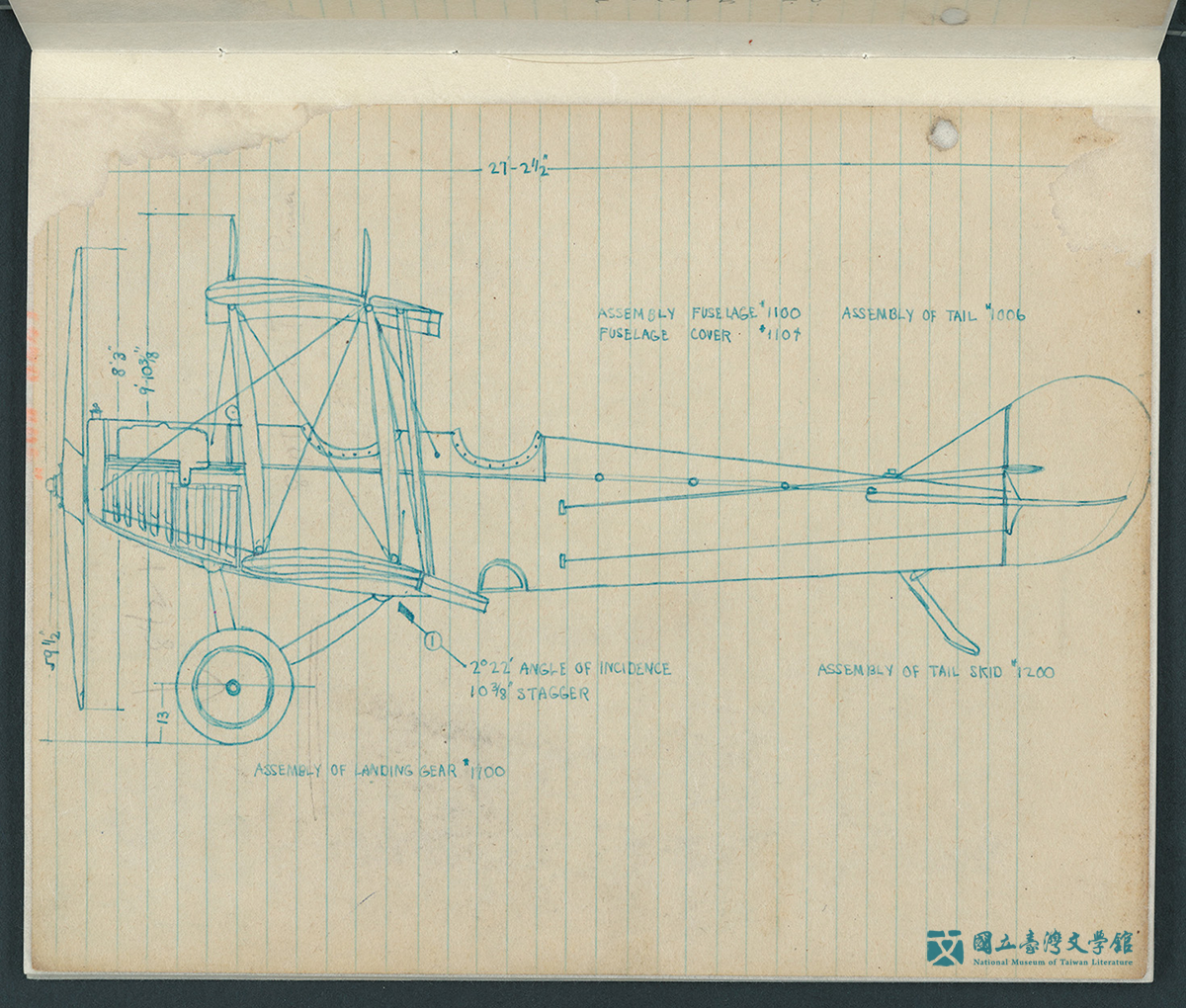
◪ William Faulkner's Canadian Royal Air Force training notebook.
While at the School of Aeronautics, Faulkner kept a notebook in which he neatly recorded lecture notes on the theory of flight, aircraft rigging, aerial navigation, and motors. The notebook is open here to his pristine drawing of a Curtiss JN-4, better known as the Curtiss "Jenny,” the plane that was used for R.A.F. cadets' flight training.
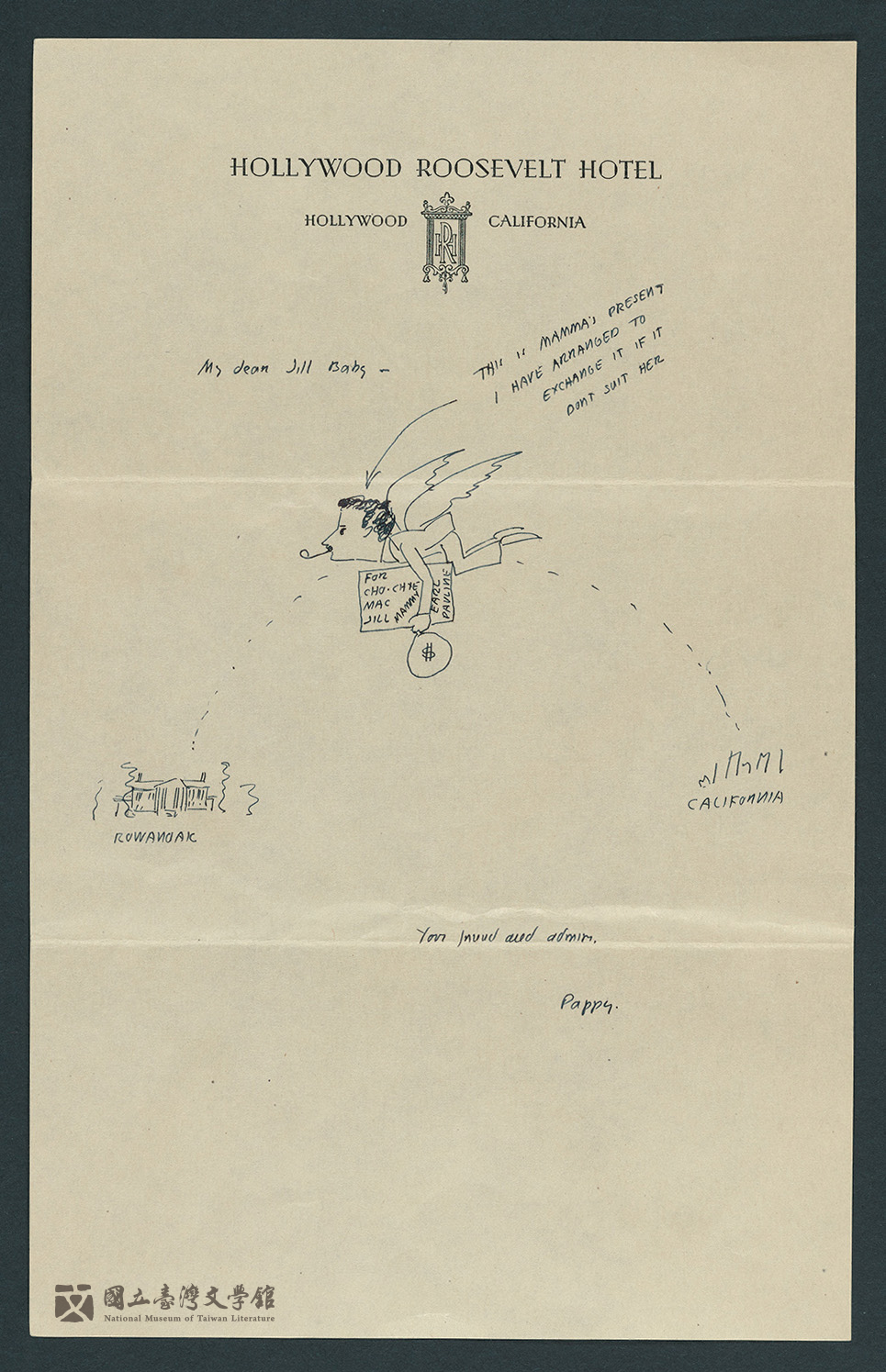
◪ William Faulkner, Letter to "My Dear Jill Baby” (Jill Faulkner), July 7, 1934.
Faulkner sent this visual letter to his daughter Jill, showing himself mid-flight on his way home to Rowan Oak, Faulkner's home in Oxford, from Hollywood, where he was working as a screenwriter. In the sketch, Faulkner carries home a bag of money and what appears to be a package for "Cho-Ch[o], Mac, Jill, Mammy, Earl, and Pauline,” and claims himself as a present for his wife Estelle. "Cho-Cho” and "Mac” were nicknames for Faiulkner's stepchildren Victoria and Malcom. "Mammy” was Jill's nurse, Narcissus McEwan.
Ernest Hemingway:
From Journalist to Write
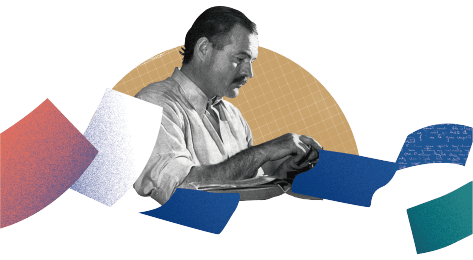
❝ I had seen nothing sacred, and the things that were glorious had no glory and the sacrifices were like the stockyards at Chicago if nothing was done with the meat except to bury it.❞
—— Ernest Hemingway, From A Farewell to Arms
Fitzgerald and Faulkner did not graduate from college, while Hemingway never received a university education. After graduating high school, Hemingway worked as a cub reporter with the Kansas City Star. The newspaper's style guide came to shape his distinctive writing style. His career as a journalist informed his concise, telegraphic style of writing, while his firsthand experiences with war as a reporter gave his war fiction convincingly life-like qualities. His classic work For Whom the Bell Tolls, which is set against the backdrop of the Spanish Civil War, is one such example.
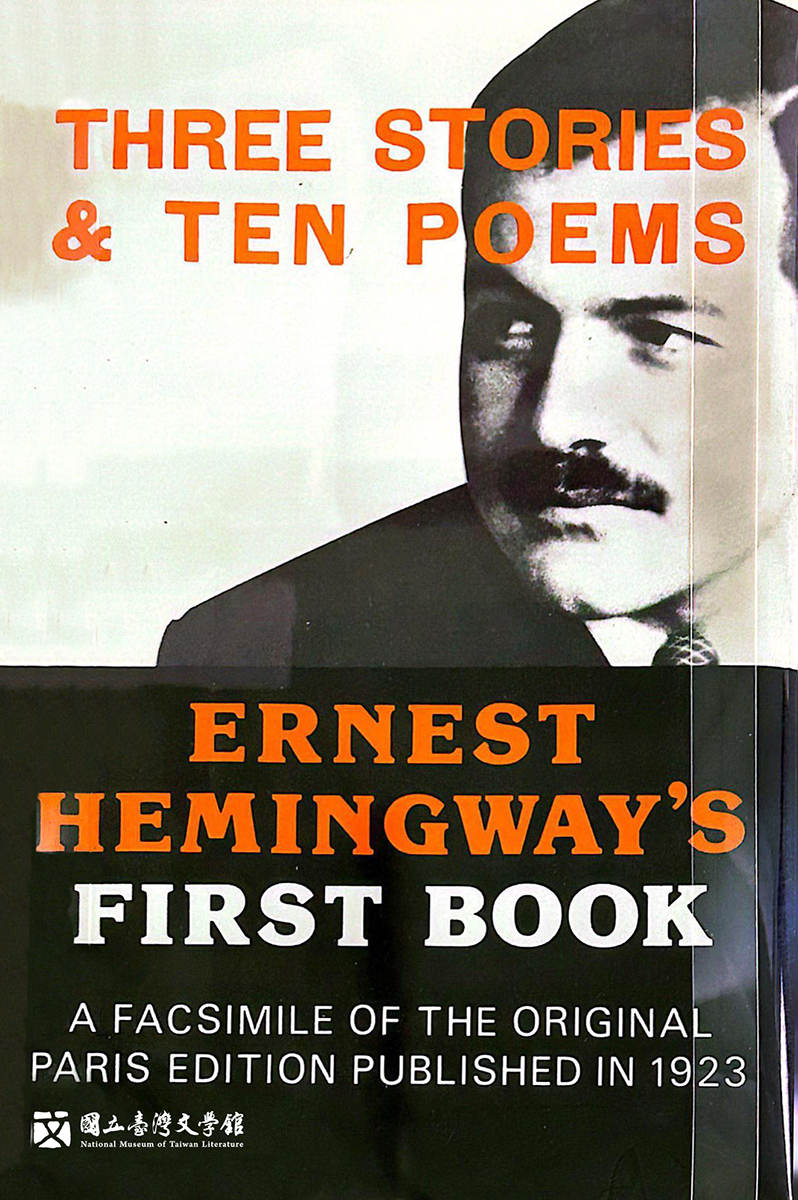
◪ Three Stories & Ten Poems by Ernest Hemingway,1923
This book was published in 1923 when Hemingway was still a Paris-based Toronto Star correspondent.
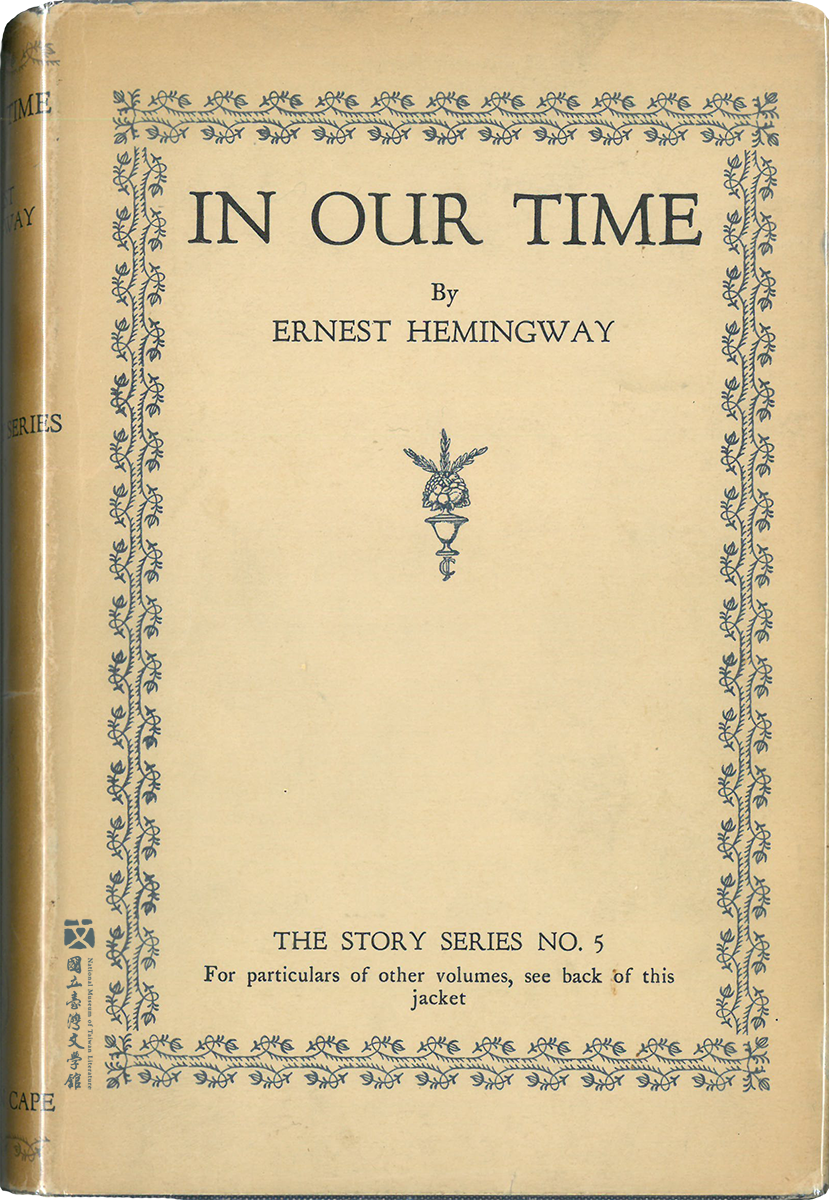
◪ In Our Time by Ernest Hemingway,1925
After WWI, Hemingway was sent to Europe by the Toronto Star as a correspondent, enjoying enthusiastically his life in Paris, besides writing news dispatches, he also wrote poems and fiction, finishing his works. With these books, it also becomes clear that many of the Lost Generation Americans began their writing career in Paris, and got accepted by mainstream publishers in the US later.

◪ The Sun Also Rises by Ernest Hemingway,1926
Hemingway's first novel and due to its publication, he could start to gain a literary reputation in the US. The book contains a lot of elements of bullfight watching, and almost all the major and minor protagonists are victims of WWI.
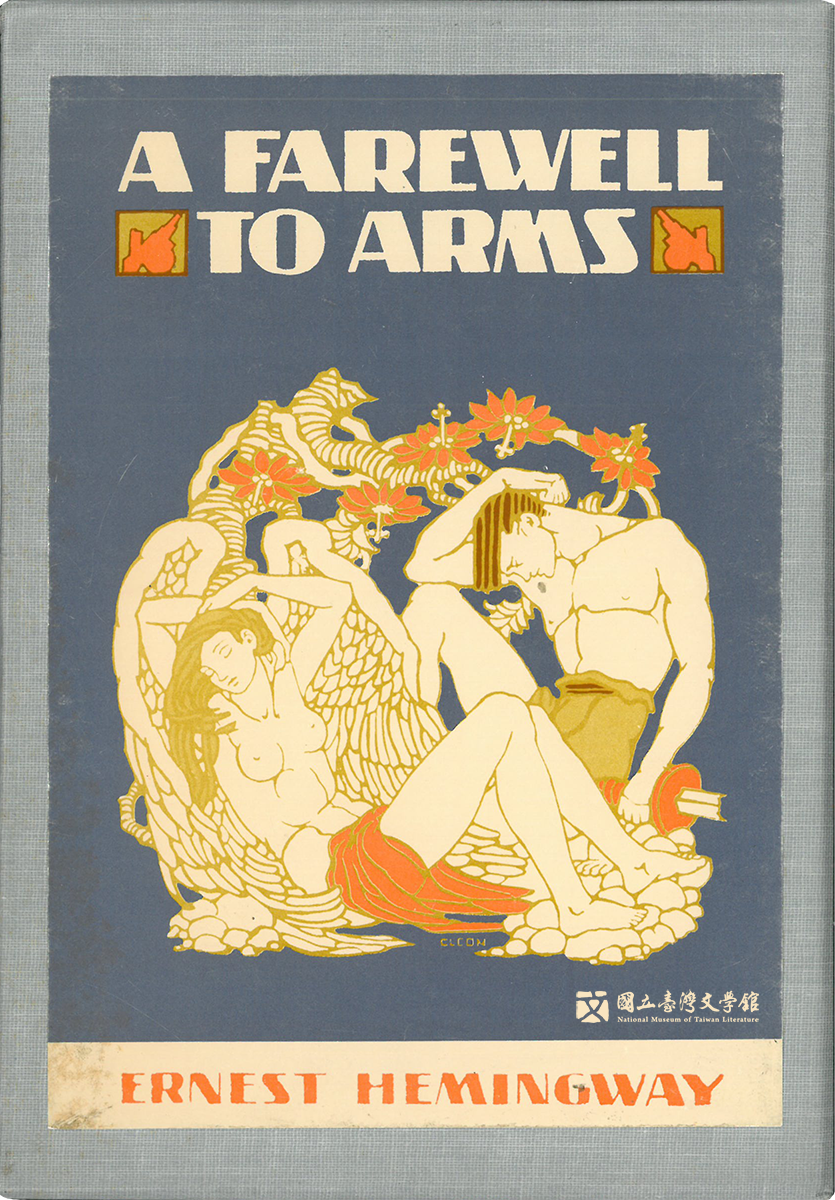
◪ A Farewell to Arms by Ernest Hemingway,1929
A Farewell to Arms, which would prove to be a classic, a story based on what happened to him during his dozens-of-days experience as a Red Cross ambulance drive in Italy.
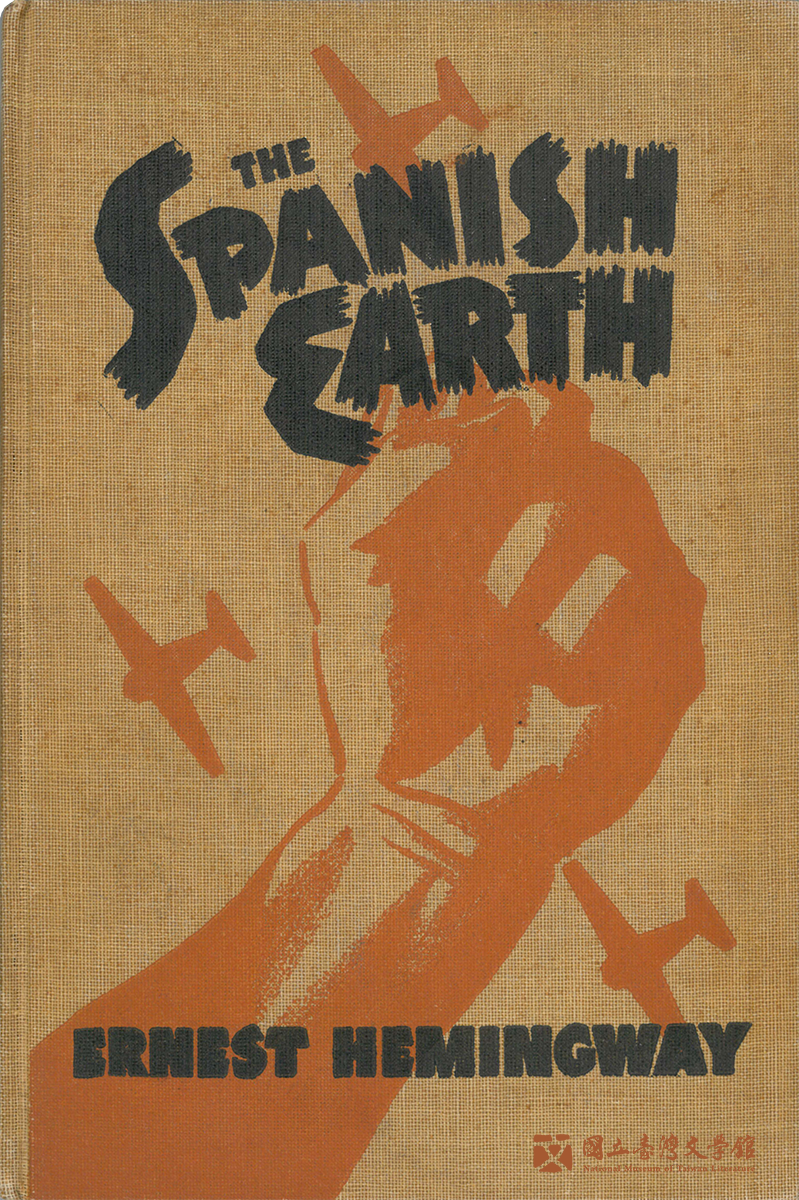
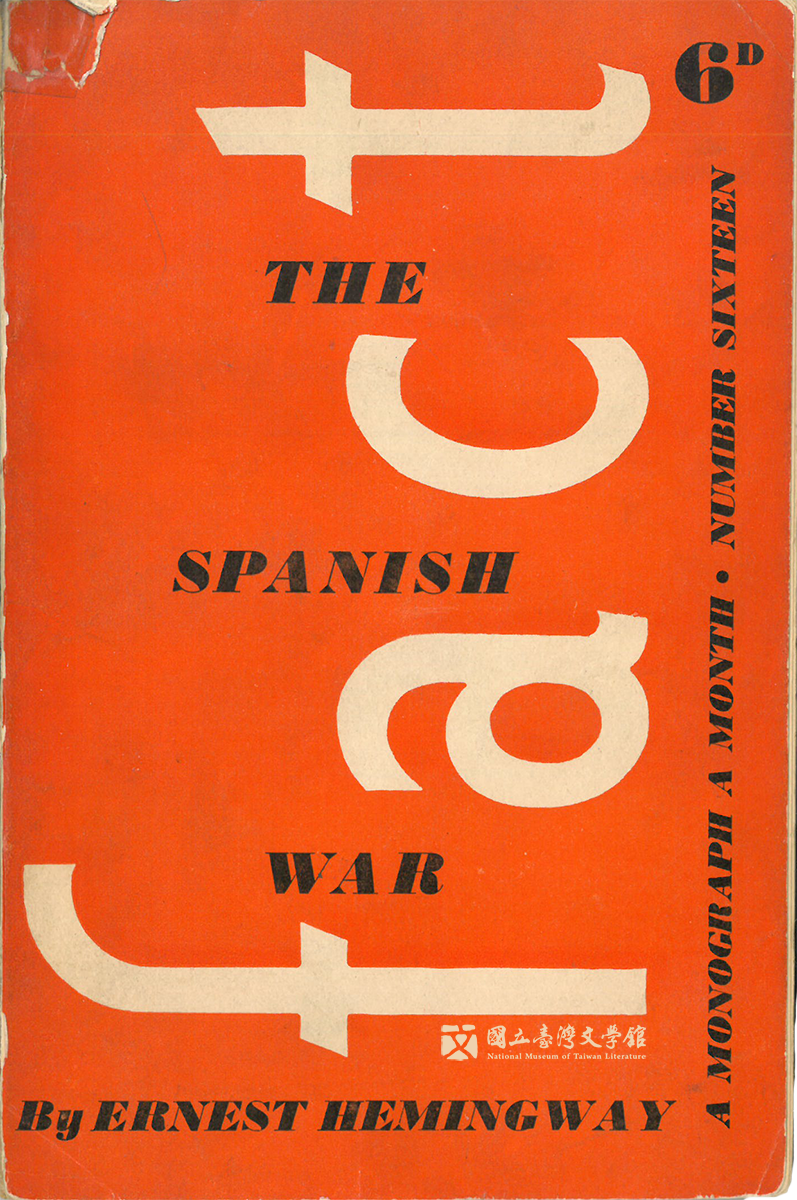
◪ A Farewell to Arms, which would prove to be a classic, a story baseThe Spanish Earth brochure by Ernest Hemingway,1938 on what happened to him during his dozens-of-days experience as a Red Cross ambulance drive in Italy. / The Spanish War by Ernest Hemingway,1938
Hemingway supported the Republican Army during the Spanish Civil War by not only raise money to shoot the documentary The Spanish Earth, but also by writing this 60-page brochure with the same title.
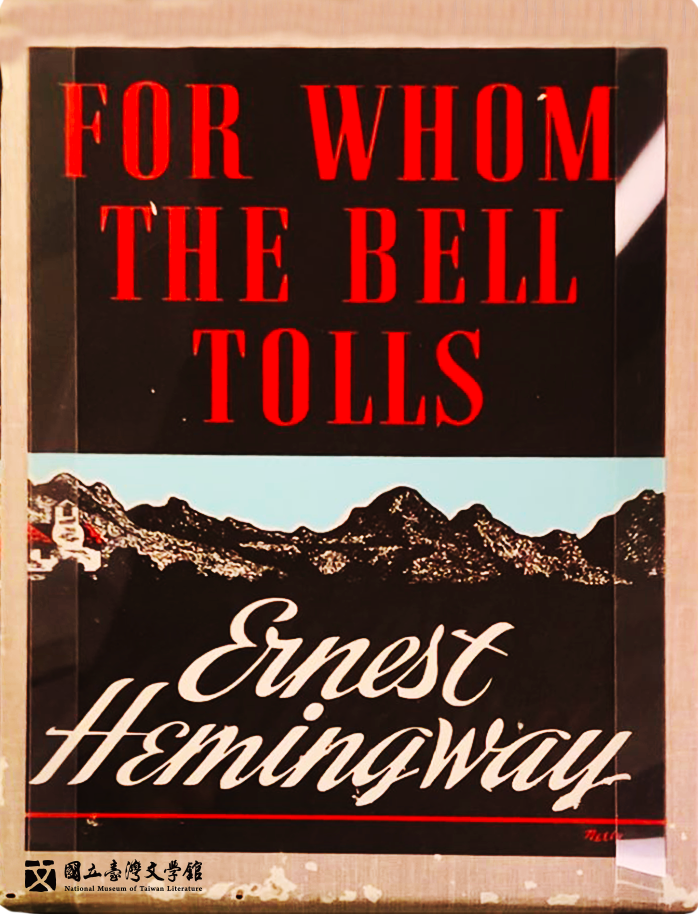
◪ For Whom the Bell Tolls,1940by Ernest Hemingway
From 1937 to 1938, Hemingway went to Spain to cover the civil war, and his own position was supporting the Republican government against the Fascist rebels led by General Franco. His drama based on the Civil War was published in 1938, and then the novel For Whom the Bell Tolls was published in 1940.
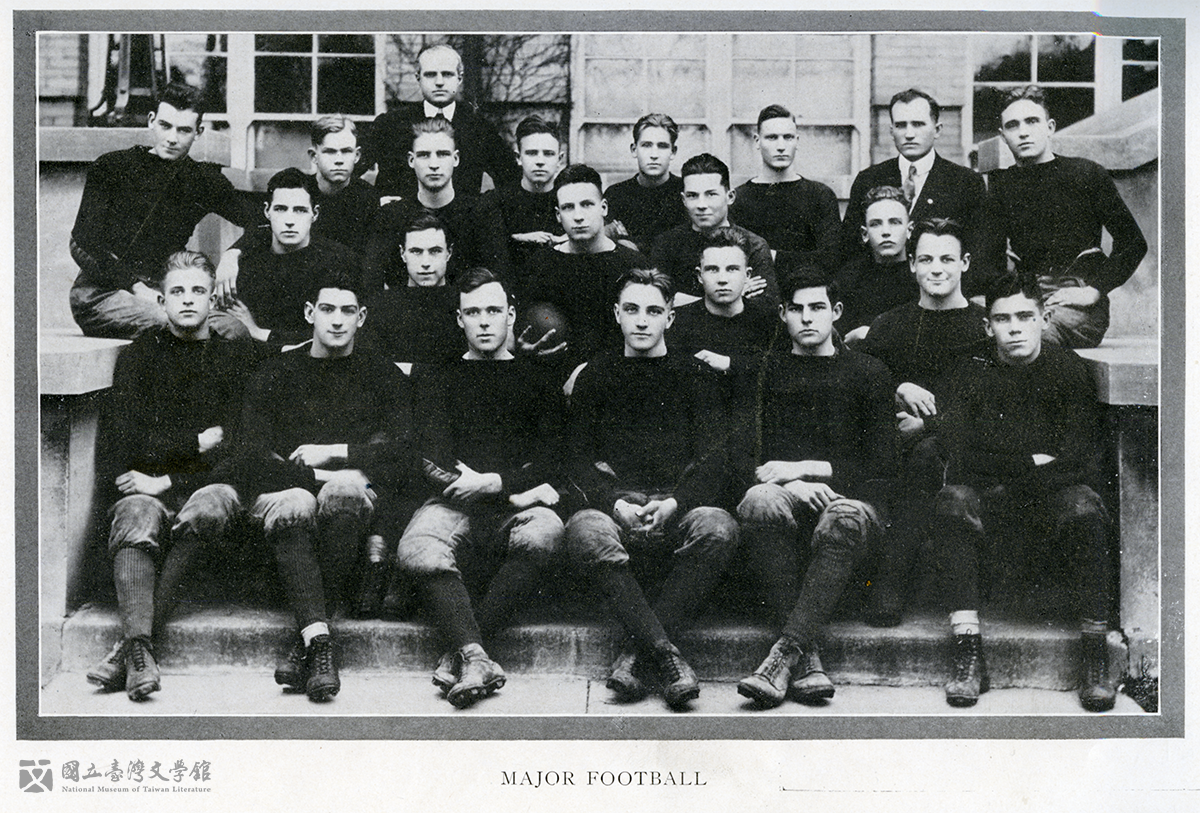
◪ Ernest Heminway Football Senior Tabula, June, 1917
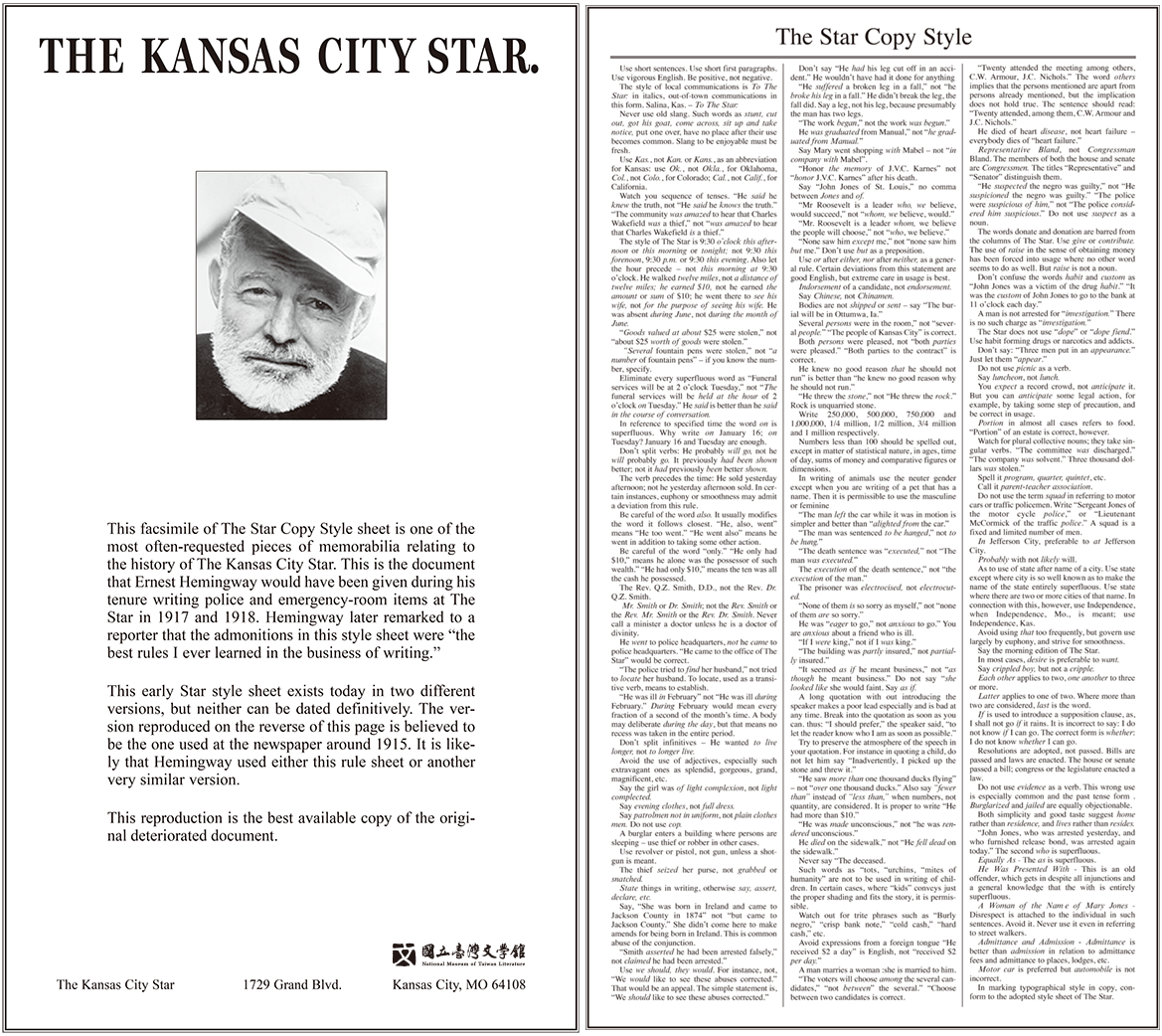
◪ "THE KANSAS CITY STAR"editorial guide
"THE KANSAS CITY STAR"editorial guide contains 110 rules, the first paragraph of which was regarded as a guideline by Hemingway "Use short sentences. Use short first paragraphs. Use vigorous English. Be positive, not negative.
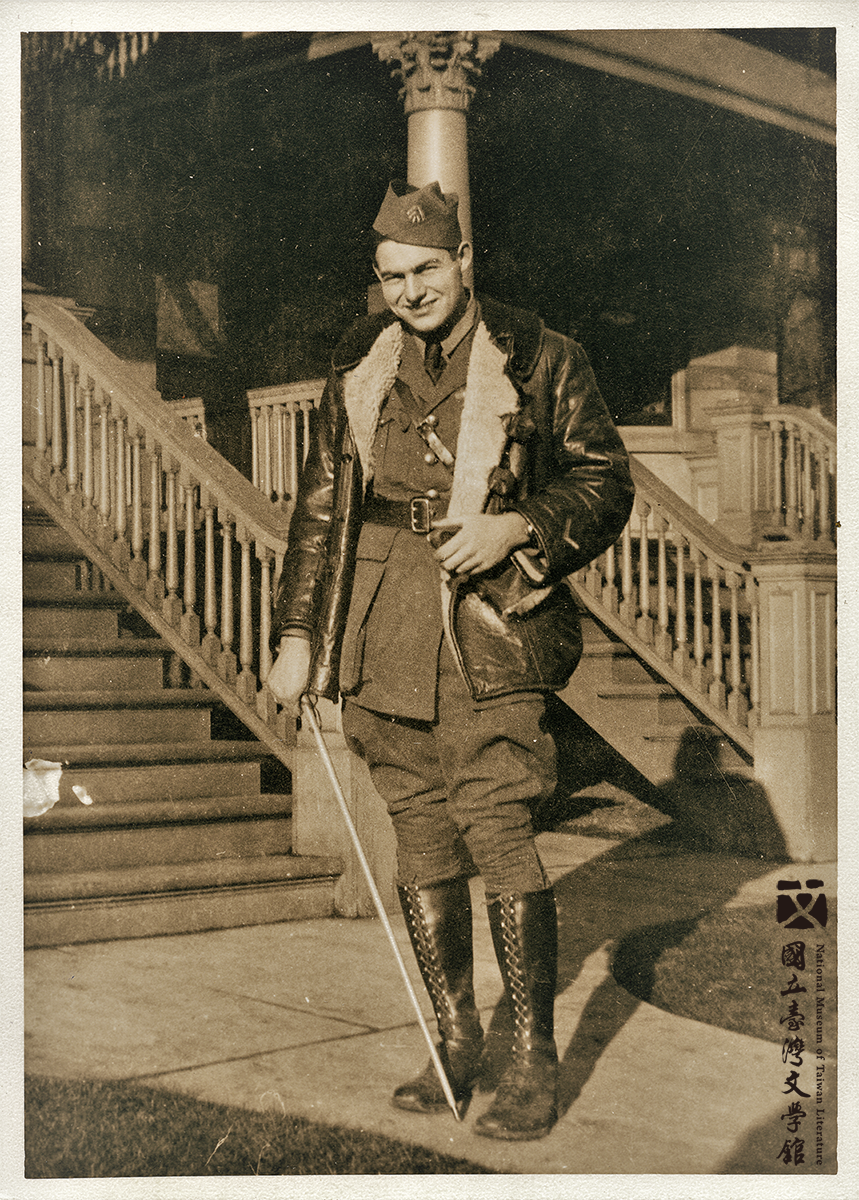
◪ Ernest Heminway with scars in his leg, 1919 in New York.

◪ Ernest Hemingway auto crash, 1930.

